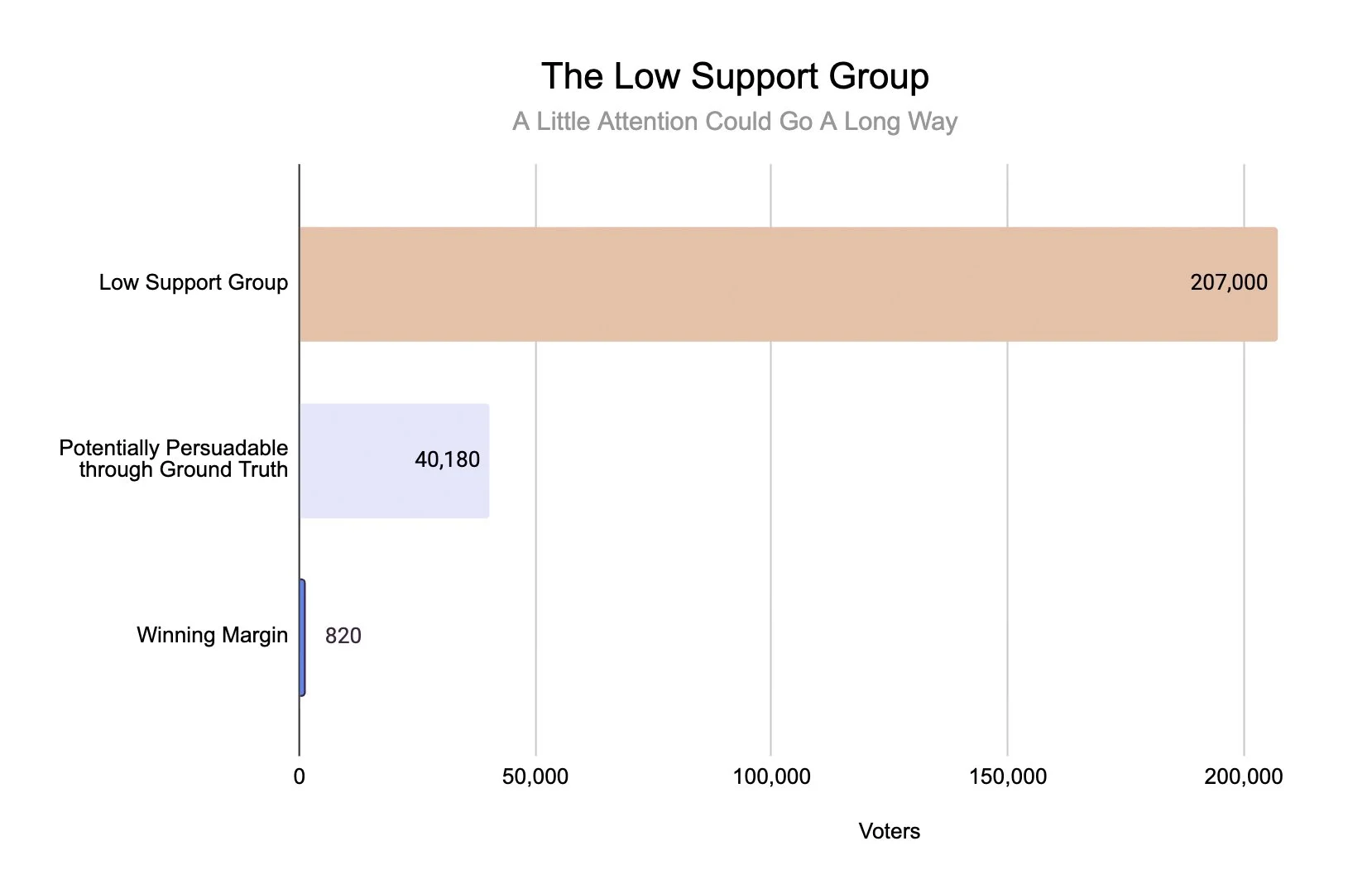CASE STUDY
What Could Ground Truth Achieve in Iowa’s 1st Congressional District?
According to initial pilot data and back-of-the-envelope analysis, a Ground Truth-like knock every door program could have made the difference in the last election.
On November 4, 2024, Democrats lost a key battleground House race in Iowa by just 799 votes. This loss demonstrates the strategic risk of writing off “low support score” voters—and the potential upside of engaging even a small share of them early on to identify, engage, and persuade them—“moving” these hidden supporters into a campaign’s GOTV universe.
Here’s where we get into the weeds. We’ll take this step by step.
In IA-01 in 2024:
Voters in the lowest third of Democratic support scores (average model score: 0.128) represent a large share of the electorate—roughly 207,000 voters, or 45% of active voters in the district. Democratic field efforts typically ignore this group completely.
Yet the Democrat was still projected to receive 10 to 15 percent of total Democratic votes from this “low support” bucket under standard turnout assumptions.
In other words: the low support group is not a fringe group—it is a non-trivial portion of any winning coalition.
To close an ~800 vote gap (and flip this seat to win the House in 2026), Democrats would only need to increase average support in this low support group by a tiny fraction [for the nerds: roughly 0.0039 (from 0.128 → 0.132)].
Put differently:
If just 20% of this bucket of low-support voters is actually reachable (≈ 41,000 people) Democrats would need to identify and turn out just 2% of those reachable voters to shift the outcome.
This does not require transforming the entire low-support group. It only requires finding the fraction that is open—which is only possible if the campaign talks to them in the first place.
This case highlights three strategic benefits of early, broad outreach:
Identification/Rectification of Under-Scored Contacts
Early contact with the entire electorate surfaces committed Democrats who the imperfect model assigns a low support score. They aren’t conflicted—they’re for sure voting Dem if they vote—they’re just in a bottom decile for some reason.
Persuasion across the electorate
Support scores aren’t very useful for predicting persuadability. And persuadable voters are likely distributed (albeit unevenly) across the electorate—not just concentrated in the middle. Starting early and knocking every door means we can:
find persuadable voters in the more Republican segments of the electorate that we otherwise would ignore, and
we can actually take the time to have persuasion conversations with them.
Reinforcement of the base
Just as there are misidentified voters in the low support bucket, knocking every door means we can identify and engage the voters in the core segment who are starting to feel disillusioned and lapse who otherwise might not be contacted until the weekend before Election Day. And as a bonus, connecting deeply with base voters will amplify volunteer and small donor recruitment.

Taking Ground Truth to the next level is only possible with your support.
Your donation will help scale this transformative program to reach more swing district voters and help Democrats win in 2026 and beyond.



